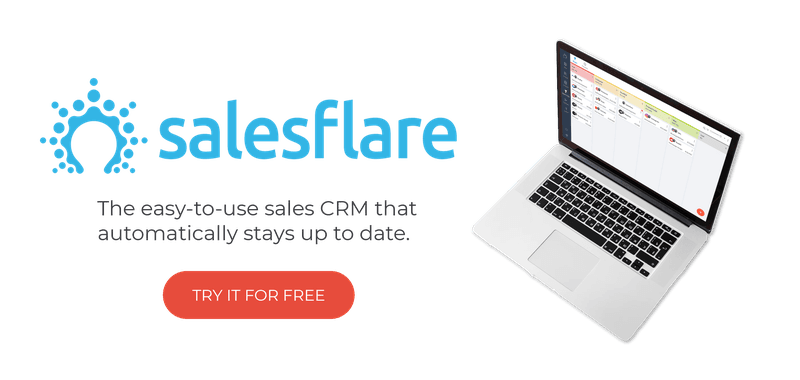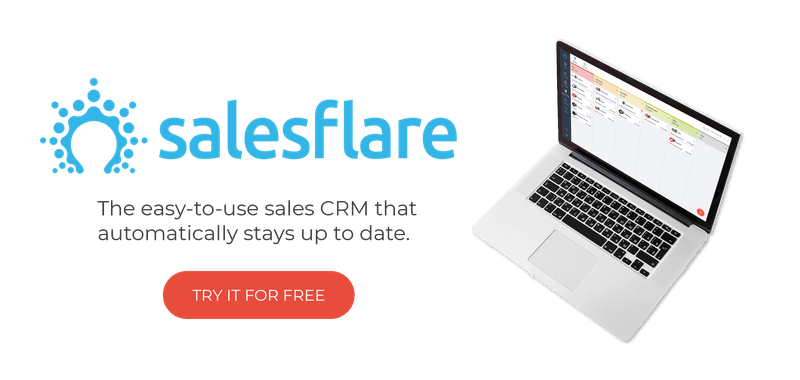How to Create a Content Calendar – Full Guide
Masterclass de marketing de contenidos: Cuarta parte
If this is the fourth part you’re reading, you are clearly on a content marketing roll: whipping up a content strategy, coming up with all those juicy content ideas. Time to get organized and move your ideas onto a neat content calendar. All 6,357 of them. 🙄
Overwhelmed by the gazillion ideas you’ve come up with? Don’t know where to start on the blank Google Sheet you’re staring at? No worries: in this blogpost, you’ll discover how to structure your content and optimize your content schedule.
Planifica tu trabajo y trabaja tu plan es tu nuevo mantra.
This post is Part Four in a brand spanking new Masterclass Series on Content Marketing. We believe it’s an incredibly important topic – and according to a little survey we did, you do too. Trouble is: there is so much content on content marketing out there (talk about meta) and a lot of the intel is conflicting.
Te traemos esta Masterclass en colaboración con Anouck Meier, Chief Storytelling Officer en Ampersand. Anouck es un copywriter de conversión y un estratega de marketing de contenidos que ha trabajado con numerosas marcas, grandes y pequeñas, para ayudarles a alcanzar sus objetivos de negocio a través de contenidos estratégicos. Vamos a aclarar la historia del contenido de una vez por todas en una guía completa. ¿Listo para sumergirte?
- Jeroen Corthout, Cofundador Salesflare, un CRM de ventas fácil de usar para pequeñas empresas B2B.

¿Qué es un calendario de contenidos?
A content calendar (also referred to as a “marketing calendar”, “blog calendar”, “social media calendar” or “editorial calendar”) can be anything you use to plan, schedule and organize content on a weekly, monthly or yearly basis.
Usually it takes the shape of a visual workflow (in technicolor, if you’re anything like me).
It helps you keep track of topics, content types, channels, team members and – last but not least – deadlines.
Normalmente, un calendario de contenidos se presenta de tres formas:
- Calendario impreso. For those old-school lovers of all things paper. 🗓
- Hojas de cálculo. Si sabes manejar una hoja de Google, puede ser una forma muy rentable de organizar tu contenido.
- Aplicaciones. Desde herramientas de gestión de proyectos como Asana o Trello a herramientas de gestión de contenidos a medida como CoSchedule o Smarterqueue: hay montones de aplicaciones que puedes utilizar como calendarios de contenidos.
That myriad of post-its with random ideas sticking on your monitor? Not a content calendar, I’m afraid.

Cuestiones a tener en cuenta antes de iniciar un calendario de contenidos
¿Está experimentando ya síntomas leves de estrés sobre qué tipo de calendario elegir?
Let me relieve some FOMO by providing a very comforting suggestion to make your choice easier: it depends. (See, my former career as a lawyer comes back to haunt me sometimes. And now you’re affected too.)
Now for some more helpful input – here are some things to consider before embarking on your content calendar adventure:
- ¿Cuántos canales y plataformas gestiona? ¿Es sólo un blog y una página de Facebook? ¿O promociona constantemente sus contenidos en una amplia gama de medios y plataformas?
- ¿Con qué frecuencia publica contenidos? ¿Publica a diario? ¿Varias veces al día? ¿Quizá sólo una vez a la semana? Siga sus pasos e intente obtener una visión clara. Esto te ayudará a determinar cómo visualizar mejor tu calendario de contenidos de forma regular.
- ¿Crea más de un tipo de contenido? ¿Sube podcasts a iTunes y al mismo tiempo publica artículos en su blog? En ese caso, su calendario de contenidos deberá ser capaz de distinguir entre ambos.
- ¿Sólo tú utilizas tu calendario de contenidos o lo hace todo un equipo? Tal vez tenga un sistema que tenga mucho sentido para usted, pero en cuanto empiece a colaborar en contenidos, tendrá que funcionar también para los demás. Los mejores calendarios de contenidos te permitirán a ti y a los miembros de tu equipo racionalizar vuestros esfuerzos.
- ¿Cuál es su proceso de contenidos? ¿Cuál es su grado de complejidad? ¿Cuánto dura el proceso de producción de contenidos? ¿Existe un proceso importante de edición, revisión o aprobación de cada contenido? Asegúrese de que su calendario distingue entre tareas similares que se encuentran en distintas fases de creación.
But Wait a Minute – Why Do I Need a Content Calendar in the First Place?
I know by this stage you may be wondering: “Why can’t I just pick a new idea from my endless list of content ideas every day and see what happens? What’s wrong with winging it?”.
Choosing a content calendar over a “winging it strategy” comes with a slew of benefits:
- Obtenga una visión a 50.000 pies de su contenido. Create a clear visual of how your content is distributed throughout the year in terms of timing, themes, formats, etc. Blog posts, social posts, email newsletters, podcasts, videos—whatever you’re busy creating, you’ll see it all in one place.
- Cumpla los plazos más fácilmente and hold yourself (and your team) accountable for getting things done. Have your content ready in time so you’re not scrambling to get posts together last minute (‘cause we all know how well that usually works out for us).
- Ejecuta esa estrategia de contenidos.. There is no way you can implement your strategy and hit those goals if you’re just posting randomly every day. A calendar keeps you on track.
- Mantenga el interés de su público evitando que sus contenidos se estanquen o se vuelvan repetitivos.
- Poner a todos de acuerdo. Inform everyone about what is being published, when and where and avoid unpleasant surprises or – heaven forbid – duplicate efforts.
- Detectar lagunas de contenido. Hazte una idea de los contenidos que quedan por crear y hazlo con tiempo de sobra para alinearlos todos.
- Planifique con mucha más antelación. Using a content calendar makes it easier to plan out your future content efforts. That could mean a week, a month, or however far ahead you’d like to plan. It just feels incredibly comfortable to sit back, relax and watch your content do the work.

No importa lo mucho que aprecies tu reputación de creativo espontáneo, en el fondo sabes que trabajar con 20 pestañas del navegador, un par de blocs de notas y una colección de post-its no es la mejor manera de hacerlo.
Without a plan, you’ll end up wasting time and you’ll be less likely to succeed. When your entire strategy is planned out on one calendar, it’s way easier to keep organized, focus on deadlines, and be more productive.
Cómo planificar contenidos en su calendario en 8 sencillos pasos
Now that we’ve got all that out of the way: how do you go about creating a content calendar that fits your needs?
1. Comience con una auditoría de contenidos
There’s a lot of focus on creating new content when you should really be focusing on creating more with less and using what you’ve already got.
No, you don’t need to produce all content from scratch. Or start creating a million pieces of content right away.
En lugar de eso, echa un vistazo a los montones de contenido valioso que hay por la oficina. Empieza a hacer balance de todos tus activos y recursos de contenido existentes para ver qué puedes incluir en la (re)combinación de contenidos.
Don’t just consider the obvious assets like existing blog posts, but dig a little deeper.
Gather whitepapers, reports, first-hand data or research, notes from meetings or trainings, slide decks and presentations. Ask team members what they still have lying around in their (virtual) cupboards. You’ll be surprised what you can come up with.
Considere si alguno de los contenidos que planifica necesita actualización o renovación. Además, echa un vistazo a qué tipos de contenido han funcionado bien en el pasado y qué tipo de cosas publican tus competidores.

2. Audite también sus plataformas
As you’re auditing your content, you may also want to take a look at your current efforts on each channel.
Algunas preguntas que hacerse:
- ¿Qué plataformas utiliza?
- ¿Cuáles funcionan mejor?
- ¿Debe seguir publicando en todos ellos?
- ¿Cuántas veces al día publica en cada plataforma?
- ¿Cuáles son los objetivos de cada plataforma?
- ¿Quién es responsable de cada canal?
Toda esta información es útil para incluirla en tu calendario de redes sociales, sobre todo si trabajas en equipo.
As you’ll be mapping out your content per platform, remember that you should be posting content that is tailored to each platform and its unique audience. Never just cross-post your content without adapting it to the specific requirements and characteristics of the platform.
3. What’s the frequency?
Don’t just ask Kenneth. From doing your audit, you’ll have a clear view on how often you’re currently posting. Will that be the plan going forward? Or do you need to amp up your efforts?
En cualquier caso, su frecuencia de publicación determinará cuántos huecos debe dejar libres por canal o plataforma. Asegúrate de que tienes espacio tanto para tus blogs o podcasts semanales como para tus publicaciones diarias en Facebook y tus tuits.

4. Piense en categorías para su contenido
Su calendario de contenidos debe tener algún tipo de sistema de categorización de contenidos. Esto tiene muchas ventajas.
No sólo le ayudará a saber qué tipo de contenido tiene más alcance y participación, sino que también le facilitará mantener las cosas frescas y variadas para su audiencia.
- Tú mismo puedes decidir qué tipos de categorías te serán más útiles. Una opción es dividirlo en soportes, como vídeos, vídeos tutoriales, entradas de blog, tutoriales, infografías, historias de Instagram, etc.
- Otra opción es categorizar el contenido según la naturaleza del contenido, es decir, curado, generado por el usuario, patrocinado, autopromocional, etc.
- I personally like to categorize content into themes too – this helps to see whether my content mix includes all the themes I’d like to cover in my content. Some of the labels I use for my own content are: conversion copy, storytelling, blogging, content marketing, e-mail marketing, freelance life and fun.
Whatever you choose, make sure the labels are descriptive and actually helpful (although that may take some time to determine). You can also use more than one label, for instance “blog post” + “content marketing” + “sponsored”.
5. Crear una base de datos de contenidos
Una base de datos de contenidos es, bueno, justo lo que suena: un lugar central para almacenar todas las piezas de contenido que usted puede desear para elegir al llenar su calendario de contenidos. Puede ser tan simple como un conjunto de hojas de cálculo, o puedes utilizar una aplicación como Asana o Evernote para hacer balance.
Asegúrese de incluir al menos lo siguiente en cada contenido:
- Título
- Content type (blog post, video, infographic,…)
- Enlace
- Fecha de caducidad (o indicación del carácter perenne)
- Imagen
- Categoría
Te recomiendo que incluyas espacio para comentarios y para extractos interesantes del contenido. Esto te ayudará a la hora de colaborar e idear el texto de tus entradas.

6. Introduzca su contenido (¡por fin!)
Hurray – after all that prep work, you’re finally ready to start filling up your content calendar! 🎉
If you’re using something like a Google Sheet (which can be all you need!), here are some basic items to include:
- Plataforma o canal
- Fecha
- Tiempo
- Enlace (si procede)
- Copia
- Imagen
If you’re using a content planning tool, like Hootsuite or CoSchedule, this will pretty much be self-explanatory.
7. Organice su equipo
Decide funciones claramente definidas para todos los miembros del equipo:
- ¿Quién se encarga de actualizar el calendario?
- ¿Quién publicará las entradas?
- ¿Asignará la redacción del texto a un redactor publicitario?
- ¿Quién proporcionará las imágenes?
- ¿Es necesario aprobar los mensajes antes de publicarlos? ¿Por quién?
- ¿Quién necesita acceder al calendario? ¿Quién obtiene qué tipo de permiso?
- ¿Con cuánta antelación programará los contenidos?
- What’s the process for coming up with new content ideas?
These are just some of the questions you’ll need to address to garantizar la máxima organización y fluidez.
Even if it’s just you, it will pay off setting up a lean process and documenting it. As soon as your team grows, you’ll have a ready-to-go manual ready for use and you can delegate away!
Depending on your company’s size, there may also be value in sharing your content calendar with a few other teams who would benefit from knowing what you’re up to. Consider sharing your calendar with copywriters, video producers, designers, project managers and even clients.

Recuerde incluir en el calendario reuniones periódicas de planificación editorial con bastante antelación al siguiente periodo de publicación. Aproveche la reunión para programar el contenido de su base de datos y para aportar nuevas ideas.
Your planning meetings can also be used to review the reach, engagement and other stats from previous periods to assess which types of content are most successful and which are less successful didn’t quite hit the mark.
Los datos de análisis e ingresos también pueden utilizarse para realizar ajustes en los contenidos ya publicados (por ejemplo, títulos, introducciones, datos SEO, enlaces salientes, etc.) para optimizar las visitas y la participación.
8. Programe la publicación de sus contenidos
You’ve got your calendar up and running: time for a celebratory dance around (or on) the table!
Queda un último paso: publicar realmente el contenido.
If you don’t have a lot of platforms to manage or huge volumes of posts to publish, you may get by by manually hitting “send” or “publish”. If you’re only using Facebook, for example, you can just use the platform’s native publishing tool to get your posts published.
If, however, you’re juggling several social media accounts and other publication platforms, a content planning app can save you oodles of time and money (and help preserve your will to live). 🙄
Algunas de las aplicaciones de planificación de contenidos más populares son:
- Hootsuite
- CoSchedule
- SmarterQueue
- Edgar
- Más tarde
- Planoly
- Viento de cola
- Buffer
- Sprout Social
- Sendible
- Stackby
La mayoría de ellas ofrecen pruebas gratuitas durante al menos un breve periodo de tiempo, así que experimenta para ver cuál se adapta mejor a tus necesidades.
Consejos finales para el éxito del calendario de contenidos
Tanto si planifica sus contenidos semanal, mensual o trimestralmente, existen varias claves universales para el éxito del calendario de contenidos:
- Iterar.todo.el.tiempo. Un calendario de contenidos es algo vivo, que respira, y debe cambiar y crecer a medida que lo hacen usted y sus necesidades de contenidos.
- Experimentar, analizar, repetir. Experiment and research elements like the best times to schedule your content, which platforms work best for your audience etc. Content marketing is a process, it doesn’t stop after hitting the publish button or putting a post on your schedule.
- There’s no one right way to calendar your content. Hay un millón de métodos, plantillas y enfoques diferentes. Juegue, pruebe cosas nuevas con regularidad y modifíquelas según sea necesario. Quizá incluso te diviertas un poco por el camino.
¿Cómo sueles organizar tus ideas de contenido? Háznoslo saber en los comentarios.
And don’t forget to check back next week for Part Five of our Content Marketing Masterclass about creating the content marked on your calendar!

Esperamos que te haya gustado este post. Si es así, ¡difúndelo!
👉 Puede seguir a @salesflare en Twitter, Facebook y LinkedIn.
- Medir el ROI del marketing de contenidos: Show Me The Money - 10 de octubre de 2019
- Repurposing Content: 4 Easy Ways to Get More Out of Your Content - 3 octubre, 2019
- Los diez mandamientos de la distribución eficaz de contenidos - 26 de septiembre de 2019
